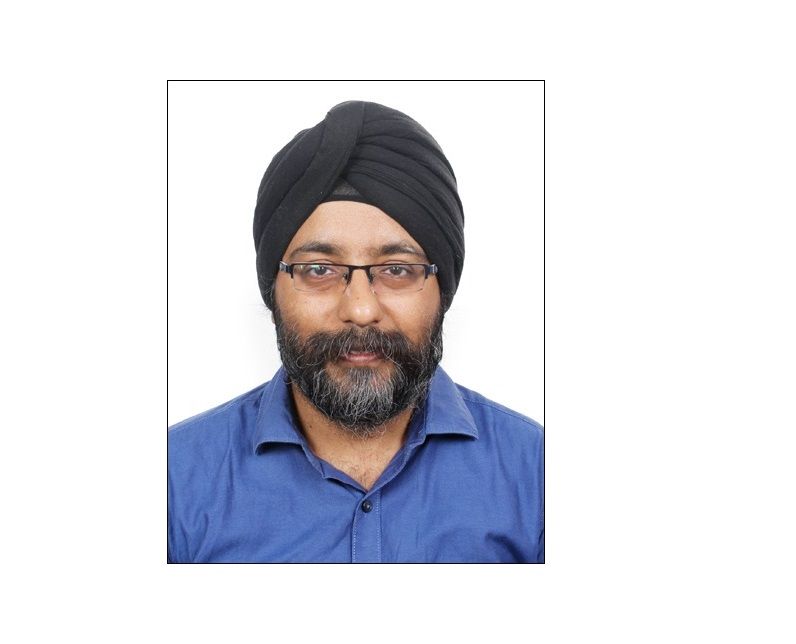Bone Density Test Guidelines
Understating what is bone density test and Learning about its reasons for undertaking the test, usefulness for diagnosis, different methods and result interpretation.

Written by
Last updated on 3rd Jul, 2025
Introduction
A bone density test evaluates bone strength by measuring mineral content and density. This test is primarily used to detect conditions like osteopenia and osteoporosis and to assess the likelihood of future fractures.
It is performed using imaging techniques such as X-rays, dual-energy X-ray absorptiometry (DEXA or DXA), or a specialised CT scan that analyses the hip or spine. The DEXA scan is the most reliable method and is widely regarded as the "gold standard."
What is Bone Density?
A bone density test assesses the mineral levels in your bones, including calcium. As people age or experience certain medical conditions, their bones may gradually lose density. This early stage of bone thinning is known as osteopenia, which can increase the likelihood of developing osteoporosis. Osteoporosis is a progressive condition that weakens bones, making them fragile and more prone to fractures. It is more commonly seen in older adults, particularly women over 65, and often affects areas such as the hips, spine, and wrists.
The Importance of Bone Density Testing
Bone density testing is vital for early detection of osteoporosis (fragile bones) and osteopenia (low bone mass), allowing for prompt treatment and preventing fractures, particularly in older adults. A bone density test is a useful tool for monitoring bone health over time. The healthcare provider may recommend this test to:
Track natural bone loss that occurs with age.
Assess bone strength before starting medications that may affect bone density.
Determine whether treatment for osteopenia or osteoporosis is effective.
A bone density test can:
Confirm a diagnosis of osteoporosis after a fracture.
Evaluate the likelihood of future fractures.
Track bone density changes over time.
Assess the effectiveness of treatment.
Monitor bone loss.
Risk factors for osteoporosis include:
Post-menopausal women not on estrogen therapy.
Older age (women over 65 and men over 70).
Smoking.
A family history of hip fractures.
Long-term steroid use or use of specific medications.
Conditions like rheumatoid arthritis, type 1 diabetes, liver or kidney disease, hyperthyroidism, or hyperparathyroidism.
Low body mass index (BMI).
Who Should Have a Bone Density Test?
A bone density test may be recommended if your healthcare provider wants to assess your bone strength and fracture risk. Certain groups are at higher risk of developing osteoporosis and other bone-related conditions, and may require regular DXA scans:
Assigned female at birth (AFAB) individuals over 65.
Assigned male at birth (AMAB) individuals over 70.
Anyone over age 50 who has previously had a bone fracture.
Those with a family history of osteoporosis, particularly if their biological parents or grandparents had it.
Individuals who have experienced a significant height loss (more than an inch and a half) since their twenties.
Younger people with increased risk factors may also need regular DXA scans. Your healthcare provider will determine when and how often you should be tested.
Certain conditions and medications can increase the risk of bone density issues, including:
Autoimmune diseases.
Smoking or tobacco use.
Excessive alcohol consumption.
Vitamin D deficiency.
Long-term use of corticosteroids, certain cancer medications, immunosuppressants, hormone suppressants, some seizure medications, and proton pump inhibitors (PPIs).
Use of heparin (a blood thinner).
Bone density testing is essential for detecting osteoporosis (thin, fragile bones) and osteopenia (low bone mass) early, as early diagnosis helps prevent fractures and complications, especially in older adults.
Types of Bone Density Tests
There are various methods available to measure bone density, with the most common and accurate being dual-energy X-ray absorptiometry (DEXA), also known as a central DEXA scan. This scan assesses the bone density of the lower spine, hip, wrist, or the entire body, and is typically carried out in a hospital or clinic.
Central DEXA Scan
During a central DEXA scan:
You will lie on your back on a padded table, and in most cases, you can keep your clothes on.
You may be asked to keep your legs straight or place them on a padded platform.
The scanning arm will move over your hips and spine, while another part of the machine will pass beneath you. The images from both machines are combined and processed by a computer for analysis.
It’s important to remain still throughout the scan, and you may be asked to hold your breath to avoid blurry images.
The test typically lasts between 10 and 30 minutes, and the results are usually available within a few days.
Peripheral DEXA (p-DEXA) Scan
In some cases, bone density scans are limited to the wrist, hand, or foot. This is known as a peripheral DEXA (p-DEXA) scan, which uses a portable device with a box-like structure. These scans are often performed in a healthcare provider’s office, a mobile health unit, or occasionally in a pharmacy.
During a peripheral DEXA scan:
You will place your finger, hand, forearm, or foot in the designated space for imaging.
The procedure takes just a few minutes, and your provider should receive the results shortly after.
Although a peripheral scan can provide useful information about fracture risk, it is not as detailed as a central DEXA scan.
If the results suggest a higher risk of fractures, your provider may recommend a central DEXA scan for a more thorough evaluation.
Preparation for Bone Density Test
A bone density scan is a rapid and painless technique. Patients will lie on their back on an X-ray table, and an area of the body is scanned.
No special preparations are necessary. Depending on the area of body being scanned, you may be able to keep your clothes on. Any items with metal fastenings, such as zips, hooks, or buckles are needed to be removed. A hospital gown is asked to wear in certain cases.
Bone Density Test Results prediction
Bone density test results are normally given as T-scores and Z-scores. A higher score indicates greater bone density, while a lower score advocates for a higher risk of fractures.
T-score: This compares the bone density of a patient with a healthy young adult of the same sex. The T-score will show that how many standard deviations your bone density is above or below the average for that group. It is usually used for postmenopausal women or men over the age of 50.
Z-score: This compares the bone density of a patient with what is expected for someone of the same age, sex, weight, and ethnic background. If the Z-score is significantly higher or lower than the average, further tests may be needed to investigate the underlying cause.it is used for premenopausal women, men under 50, or children.
T-score may fall into one of these categories:
T-score of -1.0 or higher: This is considered normal bone density.
T-score between -1.0 and -2.4: This indicates low bone density (osteopenia), and individuals at risk of developing osteoporosis.
T-score of -2.5 or lower: This suggests osteoporosis.
Follow-Up and Treatment
If bone density results show that you have low bone density, your healthcare provider will recommend steps to help prevent further bone loss. These may include:
Increasing physical activity, such as walking, dancing, or using weight machines.
Boosting your intake of calcium and vitamin D.
Taking prescribed medications to enhance bone density.
Your healthcare provider will also determine how frequently follow-up scans need to be taken based on risk of bone fractures. The general guidelines are:
For high-risk individuals: a central DEXA scan every two years.
For moderate-risk individuals: a scan every 3 to 5 years.
For low-risk individuals: a scan every 10 to 15 years.
Although a bone mineral density test involves a small amount of radiation, most experts agree that the risk is minimal as compared to the benefits of detecting osteoporosis early. Identifying bone density issues before fractures occur allows for taking preventive measures to strengthen bones and reduce the risk of future complications.
Conclusion
A bone density scan is a quick, straightforward, and painless procedure that enables the healthcare provider to detect conditions affecting the bone density at an early stage. Depending on your age, family history, and other risk factors, you may need regular screenings. It’s important for everyone to have their bone density checked as they get older, and the healthcare provider will advise on how frequently one should have a DXA scan. If there is a family history of osteoporosis, you may need to undergo tests more often to keep track of your bone health.
Consult Top Orthopaedician
Consult Top Orthopaedician

Dr. Manoj Dinkar
Orthopaedician
15 Years • MBBS, Dip (Orthopaedics)
New Delhi
THE DOCTORS NESST, New Delhi

Dr. Keshav Digga
Orthopaedician
14 Years • MBBS, MS Orthopaedics, FIASM, FIMISS
Kolkata
DIGGA HEALTHCARE, Kolkata

Dr. Gaurav Prakash
Orthopaedician
12 Years • MBBS, Diploma in Orthopaedics, DNB (Orthopaedics)
Delhi
Max Super Speciality hospital, Delhi

Dr. Amandeep Singh Narang
Orthopaedician
11 Years • MBBS, DNB
Delhi
APOLLO FAMILY CLINIC, Delhi

Dr. Deepak Inamdar
Orthopaedician
18 Years • MBBS, D.Ortho (Manipal), DNB Ortho, MNAMS Ortho (New Delhi), Fellow Joint Replacement Surgery (Ahmedabad), Fellow Revision Joint Replacement Surgery (Endoklinik, Germany)AO Fellow (UHCW, U. K)
Bengaluru
Dr Deepak Inamdar 'S Orthopedic And Joint Replacement Centre, Bengaluru
(375+ Patients)
